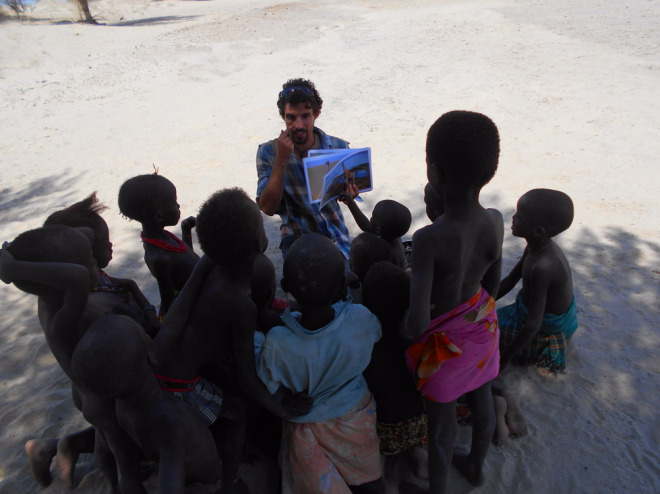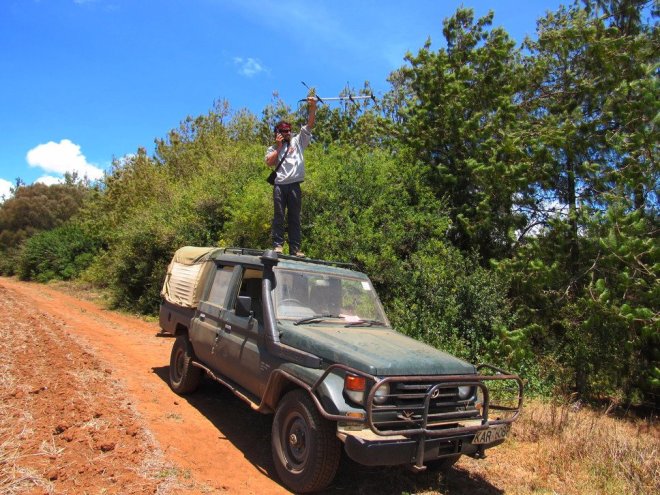Sibiloi National Park – Mpala (Laikipia)

Sibiloi National Park
I had the exceptional opportunity to be part of two expeditions carried by Professor Mar Cabeza, which offered me the great opportunity to explore Sibiloi National Park. Moreover, in collaboration with the Turkana Basin Institute and National Museums of Kenya, the team has started to set up the bases of the interdisciplinary project by evaluating ecological aspects such as monitoring large mammals, combined with social aspects, including interviews with local communities, considering their traditional ecological knowledge. Most importantly, these expeditions stimulated my solid decision to do a PhD involving the locals with a collaborative approach to develop a conservation research project.

Sibiloi National Park, known as the ‘Cradle of Humankind”, is located in the north-eastern shore of Lake Turkana. It is well known for the hominid fossil discoveries and the area is considered as the most probable location for the origins of the human species. Furthermore, it was listed as a UNESCO World Heritage Site in 1997.
To date, it has received scant conservation attention due to its isolation and negligible tourism interest. The situation in Sibiloi is alarming, with widespread symptoms of defaunation, and large-scale infrastructure developments resulting in rapid social transformations (‘Breaking the Cradle of Humankind’ and ‘Winds of Hope for Sibiloi National Park’). The Daasanach is the principal ethnic group living in the area. They are nomadic pastoralists and their main source of livelihood is the livestock. Their most valued livestock are cattle and goats.
The Global Change and Conservation group, University of Helsinki, has initiated a long-term integrative and collaborative project to study social-ecological changes in Sibiloi National Park by using an inter-disciplinary approach. The venture has already done two expeditions to the area, November-December 2016 and March-April 2017.
The overall objective of this research project is to establish a baseline to monitor ecological and cultural changes in Sibiloi National Park, while controlling for changes in the surroundings. Because of the notorious lack of comprehensive sources with which to assess change in the area, the establishment of a baseline remains paramount in order to monitor both current and future threats, as well as to provide the required information to optimize conservation efforts both within and outside the park, working together with the local communities.
Mpala (Laikipia)
Mpala is located beneath the shadow of Mt. Kenya, in the heart of central Kenya’s Laikipia County.

Mpala covers an area over 48,000 acres of semi-arid savanna, acacia bushland, wooded grassland, rocky escarpments and riverine habitats along the Ewaso Nyiro and Ewaso Narok rivers. Mpala is home to an abundant and diverse wildlife such as elephant (Loxodonta africana), giraffe (Giraffa camelopardalis), common hippopotamus (Hippopotamus amphibius) and black-backed Jackal (Canis mesomelas).
These large populations of wildlife mingle alongside livestock, mostly cattle, which is present in low densities in relation to wildlife densities. Therefore, Mpala is an example of a sustainability area with an abundant and diverse wildlife and livestock. Nevertheless, Laikipia is recently facing an increase of pastoralism in an already fragile environment, which is expected to challenge the ongoing sustainability.
Mpala Research Centre is engage with the surrounding local communities and with the global conservation efforts. Mpala has multiple educational programs in order to face issues of human-wildlife conflict in the area, and thus supporting wildlife recovery alongside meeting the needs and aspirations of local communities. The Maasai community forms the largest share of inhabitants in Laikipia.













